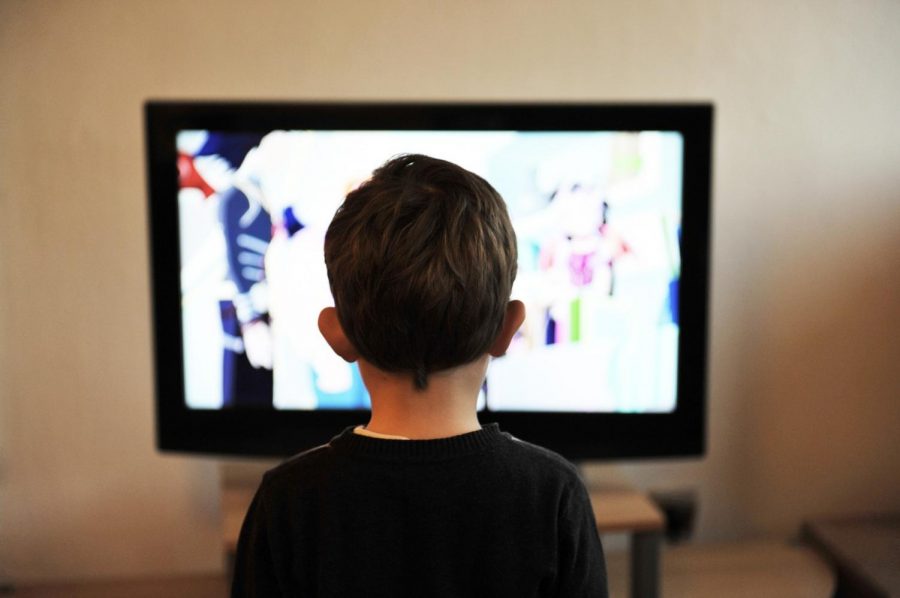The Major Problem with Primetime TV
November 9, 2017
Long ago, primetime TV flooded the cable sets of televisions across the country. Families, thrilled by weekly programming, sat down together to gaze upon the historical silver screen. Today is a different tale. Through a miraculous television evolution, shows have spread from the living room tv set to the laptop or handheld device. New companies like Netflix and Amazon Prime, have risen to challenge the veterans in Hollywood.
But… I believe the major producers, ABC, NBC, CBS, are setting their own end dates. While I don’t expect them to fade soon, their power is certainly dissipating, as the new era of television takes shape.
It’s easy to say that primetime producers are seasoned individuals who shaped the industry. Shows like Grey’s Anatomy, How to Get Away with Murder, the Big Bang Theory, and more, set themselves on the map with addictive storylines and lovable characters. Yet in this age, that’s just not enough to keep a company afloat. Plenty of TV shows can boast the same attributes, and plenty of those TV shows don’t finish their first season. Sure, they’ve got top writers and excellent directors, yet somehow, they struggle.
The television industry is about marketing and scheduling as much as it is about the art of filmmaking. Netflix and streaming services, don’t have to worry about the dilemma of scheduling their nightly shows. They produce buckets of a show at a time, and viewers stuff themselves sick. It’s binge-watching, a cultural phenomenon that propelled Netflix to the head of Hollywood. Think about Stranger Things, their sci-fi hit. Twitter flooded with tweets after the show’s second season debut. Fans were swallowing the entire season in 9 hours. It became a trend, no, accomplishment to gulp down nine hour-long episodes in one sitting. Primetime producers can’t offer such a luxury. While their content is ‘bingable’, it usually comes plagued with commercials. In less than two minutes, tv shows lose their addictive flavor to a Tide Pods ad. Fair? Certainly not, yet that’s how primetime producers make an income. For streaming service, it’s the subscriber fee.
Culture has evolved throughout the world and primetime tv is struggling to keep up. Shows’ content is generally on target, yet in addition to awkward binge-watching, the weekly/nightly timing doesn’t fit with America’s culture. The new generation is all about moving quickly and coherently, not having to wait as long. It’s hard to sit down during a designated time slot and watch a favorite TV show. What if viewers are busy or not in the mood? This especially applies with comedies often directed towards families or parents. It’s unfortunate, yet modern culture just doesn’t encourage family togetherness. In the United States, it’s estimated that 1/4 of families eat dinner together 0-3 days a week. Let alone watch a show with one and other.
Netflix also has the upper-hand when it comes to plot planning and series development. They know that their success is often due to the viewer’s ability to consume episode after episode after episode. From this, they can build plot-lines crafted without commercial breaks and with cliffhangers that only further indulge that craving.
I always think about the show Riverdale. Like much of Netflix’s content, it comes from an outside producer, the CW. However, the first season is available to stream. It took me two days to finish ten forty-five minute episodes. Call it the drama, the characters, the undeniable gasp-worthy moments; one thing was certain, I was addicted to Riverdale, and I promptly moved onto season 2 via CW’s streaming site. When I shifted to the new season, it was a different feel. My favorite characters were back. More drama was introduced, yet still… I wasn’t hooked. It was the same television show just in a different format, complete with commercials and missing episodes. It took me three nights to finish the second season’s first episode, and I have to say, I’m not craving more.
I can’t argue with the fact that Netflix’s structure has its flaws. Seasons of shows are often produced yearly, and for those who can’t space out the episodes in weekly doses, a year is a long time to wait for new content. Viewers can hardly stay interested through an ad break let alone a year long void.
Nevertheless, if streaming services can play the cards right, they have the capability to rise above the veterans and establish the next era of television (if isn’t already upon us).


